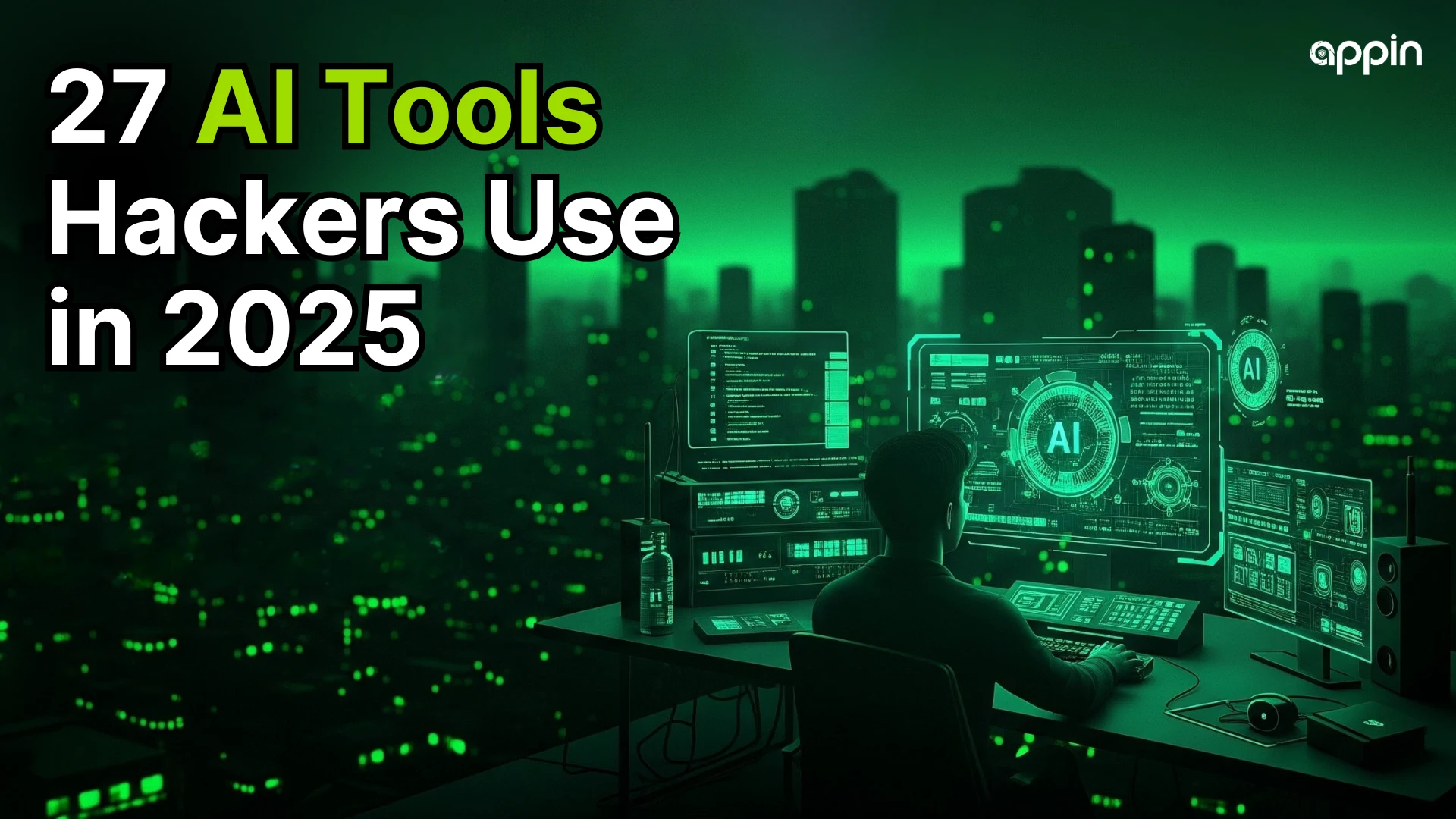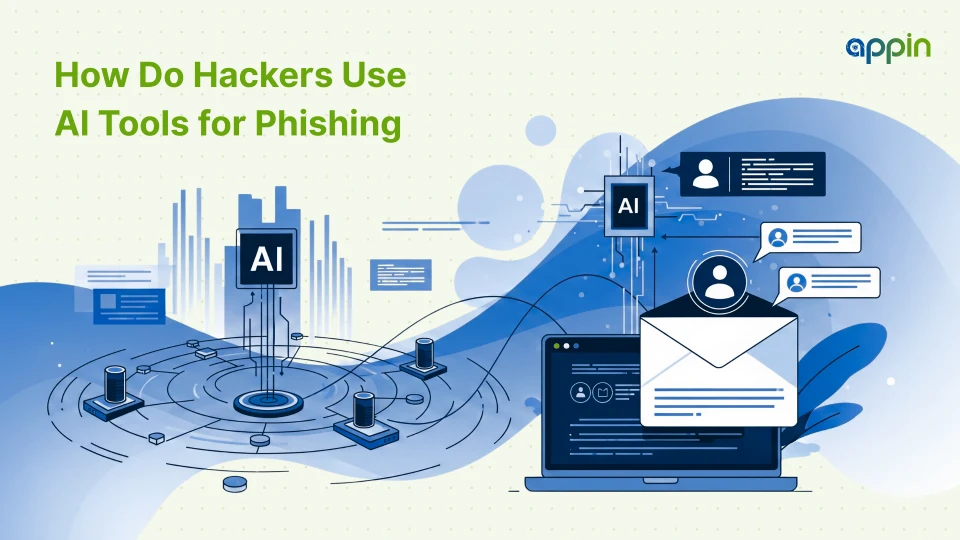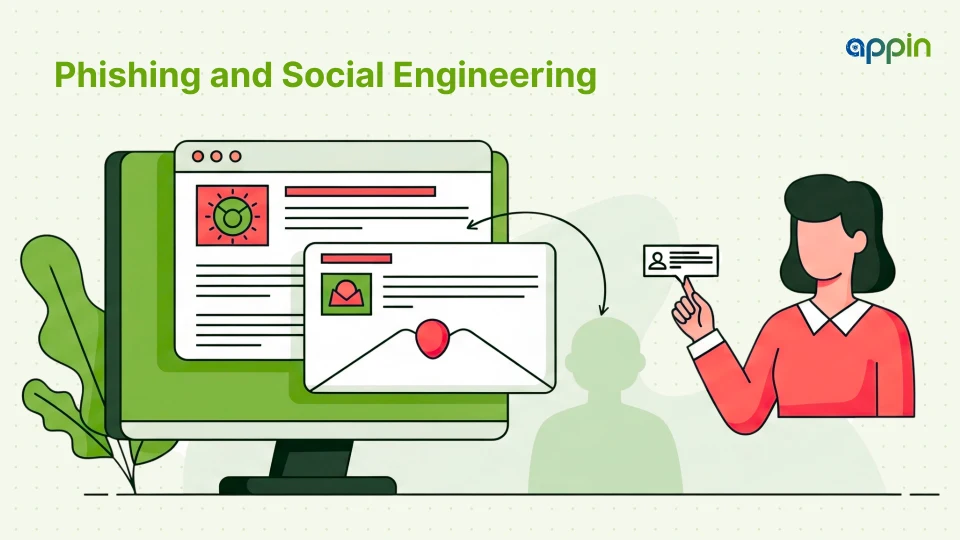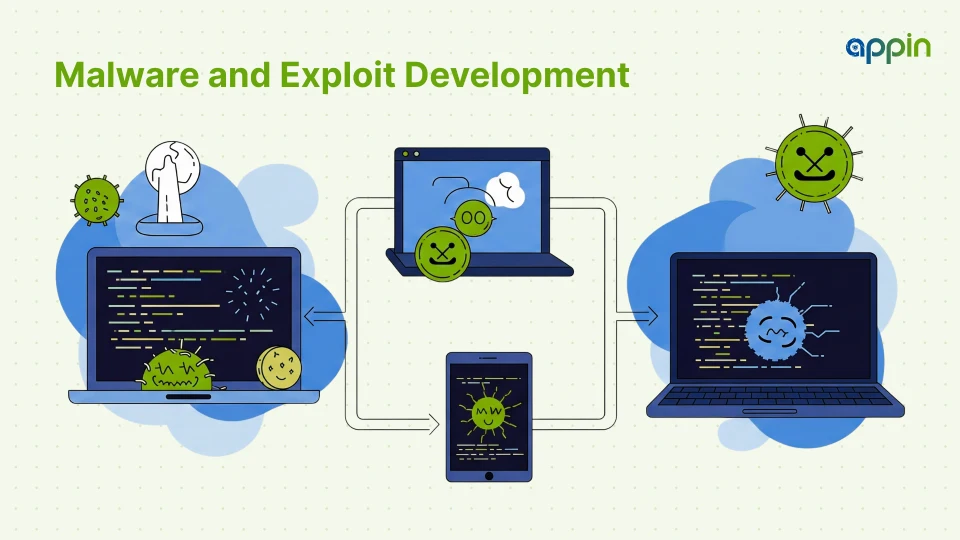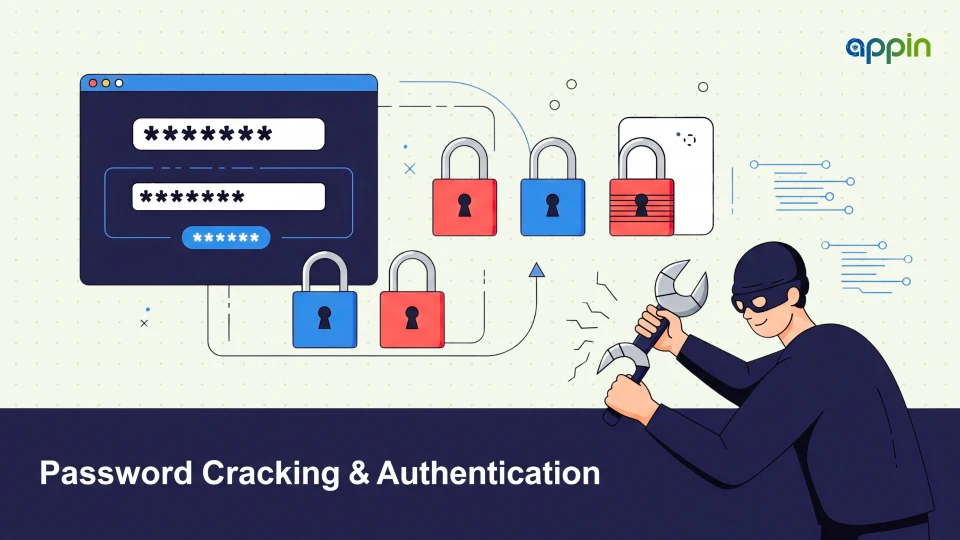Are Hackers Really Using AI Tools in 2025?
Yes, hackers are using AI for phishing, malware, OSINT, and password cracking.
The number of AI Tools Hackers Are Using in 2025 has increased as artificial intelligence becomes more accessible. These are often AI hacking tools created for productivity or research but misused for scams, exploits, or fraud.
Most of these tools are dual use. Hackers may misuse them, but ethical hackers and security teams can study them to strengthen defenses. By understanding how they work, professionals can prepare better safeguards against threats.
For example:
- AI text generators are used for phishing but can also train employees through simulations
- AI code tools can generate malware but can also help defenders detect it faster
If you want to explore these technologies safely, structured training such as a Cyber Security Certification provides the right foundation.
Let us now examine 27 AI tools hackers use and how they can be applied ethically.
How Do Hackers Use AI Tools for Phishing and Social Engineering?
Hackers use AI text and voice generators to craft convincing scams.
With the help of AI phishing tools, attackers can now write professional emails without errors. They also use AI social engineering attacks by cloning voices or creating fake job offers that appear real. These methods trick victims into clicking links or sharing sensitive details.
Common examples include:
- Phishing emails that look like bank or company notices
- Deepfake videos impersonating leaders to request money transfers
- Voice cloning used in fake customer service calls
Ethical use of these tools exists too. Security teams create phishing simulations to train employees. By experiencing realistic attacks in a safe setting, users learn how to recognize warning signs.
The difference lies in intent. While hackers use these tools to deceive, ethical hackers use them to build awareness and strengthen defenses.
How Do Hackers Use AI Tools for Password Cracking?
AI speeds up brute force and dictionary attacks.
Many AI Tools Hackers Are Using in 2025 are designed to make password guessing more efficient. With AI password cracking tools, attackers can test millions of combinations in a fraction of the time compared to traditional methods. They also apply AI brute force attacks that learn from previous failed attempts and refine guesses intelligently.
This creates risks for anyone who still uses weak or reused passwords. Accounts can be breached quickly, and personal or business data may be exposed.
Ethical hackers use the same techniques in controlled penetration testing. By testing password strength in a safe environment, they identify weak policies and recommend stronger practices.
The takeaway is clear: long, complex, and unique passwords are the best defense against AI-driven cracking. Pairing them with multi factor authentication makes attacks even harder to succeed.
Can AI Tools Help Hackers Create Malware?
Yes, AI can generate polymorphic malware that bypasses defenses.
Hackers use AI malware generators to create programs that constantly change their code. These tools produce AI polymorphic malware that looks different with each execution, making it harder for antivirus systems to detect. Some even use AI to learn how to avoid detection over time.
This presents serious challenges for cybersecurity. A single malware strain can have endless variations, spreading faster and staying hidden longer.
Ethical use of these technologies is possible. Researchers and defenders analyze AI-generated malware in labs to study its patterns. This helps in building smarter antivirus tools and intrusion detection systems.
For learners, the key lesson is that AI does not create new hacking concepts but enhances existing ones. By studying these patterns ethically, cybersecurity professionals can stay ahead of attackers who misuse them.
How Are AI Tools Used for Reconnaissance and OSINT?
Hackers use AI to scrape emails, domains, and personal data.
Among the AI Tools Hackers Are Using, many are built for OSINT but repurposed for exploitation. These AI OSINT tools automate data gathering from social media, websites, and leaked databases. AI reconnaissance hacking then organizes this information to prepare targeted attacks.
Examples include:
- Collecting employee emails for spear phishing
- Mapping company domains to find exposed servers
- Using geolocation data for identity theft
Ethical hackers rely on the same methods in red team exercises and bug bounty research. They gather information legally to understand potential weaknesses before attackers exploit them.
The difference is that ethical use reports findings responsibly, while malicious use exploits them. For students, this shows how AI makes reconnaissance faster, but ethics decide whether it strengthens or threatens security.
What AI Tools Are Hackers Using in 2025? 27 Examples and Ethical Uses
Hackers are using a wide range of AI tools in 2025 for phishing, malware creation, reconnaissance, and scams, but each can also be used ethically in labs and security training.
Below is an AI hacking tools list grouped by categories. Each entry shows how hackers misuse it and how ethical hackers can apply it responsibly. Understanding the AI Tools Hackers Are Using gives learners clarity on both risks and defenses.
Phishing and Social Engineering
ChatGPT-like LLMs
- Used to write fluent phishing and BEC lures at scale.
- Ethical angle, safely simulate lures in labs to train users.
Jasper
- Copywriting AI that can be misused for tailored scam copy.
- Ethical angle, craft benign simulation content for awareness.
DeepFaceLab
- Deepfake video creation, abused for CEO fraud and impersonation.
- Ethical angle, teach deepfake spotting with known samples.
ElevenLabs
- Voice cloning at consumer quality, seen in scam incidents and studies.
- Ethical angle, verify via code words and call-back rules.
Copy.ai
- Generic marketing AI that can generate fake recruiter or HR messages.
- Ethical angle, use it to build safe red-team templates for drills.
Malware and Exploit Development
GitHub Copilot
- Hacker use: Write exploit code faster.
- Ethical use: Speed up secure coding and vulnerability research.
AI Polymorphic Malware Generators
- Hacker use: Build malware that constantly changes to bypass antivirus.
- Ethical use: Analyze mutations to improve detection.
Metasploit with AI plugins
- Hacker use: Automate exploitation of common vulnerabilities.
- Ethical use: Run penetration testing more efficiently.
Obfuscation AI
- Hacker use: Hide malicious code.
- Ethical use: Study obfuscation to improve code scanning tools.
MalwareGAN (PoC)
- Hacker use: Train malware to evade antivirus.
- Ethical use: Develop smarter antivirus and intrusion systems.
Password Cracking and Authentication
Hashcat with AI modules
- Hacker use: Enhance brute force speed.
- Ethical use: Test password strength in labs.
John the Ripper (AI-enhanced)
- Hacker use: Crack encrypted passwords faster.
- Ethical use: Audit password security in penetration testing.
CAPTCHA Solvers (AI GANs)
- Hacker use: Break authentication barriers.
- Ethical use: Research CAPTCHA resilience.
Face Recognition Spoofing AI
- Hacker use: Fool biometric systems with fake images.
- Ethical use: Test face recognition systems for weaknesses.
Reconnaissance and OSINT
Maltego with AI extensions
- Hacker use: Map company assets and employee details.
- Ethical use: OSINT for red team research.
Shodan + AI filters
- Hacker use: Find vulnerable IoT devices.
- Ethical use: Identify exposures for patching.
Recon-ng with AI
- Hacker use: Automate domain and subdomain discovery.
- Ethical use: Faster reconnaissance in bug bounty testing.
Creepy
- Hacker use: Gather geolocation data for stalking or fraud.
- Ethical use: Study geolocation privacy risks.
Automation and Bots
AI Chatbots
- Hacker use: Pretend to be customer support and steal data.
- Ethical use: Train teams to identify fake support requests.
Social Media Bots with GPT
- Hacker use: Spread scams or fake news at scale.
- Ethical use: Study bot behaviors for detection.
Spam Generators
- Hacker use: Launch phishing campaigns quickly.
- Ethical use: Test spam filters in labs.
RL-based Botnet Management
- Hacker use: Use reinforcement learning to control botnets.
- Ethical use: Research to develop better defense strategies.
Image and Video Manipulation
Stable Diffusion
- Hacker use: Create fake IDs or screenshots.
- Ethical use: Build fraud detection models.
MidJourney
- Hacker use: Generate scam visuals and advertisements.
- Ethical use: Study fake ad recognition.
AI Watermark Removers
- Hacker use: Alter proof of documents or media.
- Ethical use: Research tampering detection tools.
Financial and Crypto Fraud
AI Crypto Wallet Drainers
- Hacker use: Automate theft from digital wallets.
- Ethical use: Analyze patterns to secure wallets.
AI Trading Bots
- Hacker use: Run pump-and-dump schemes.
- Ethical use: Learn market manipulation prevention.
For students, studying this AI hacking tools list in a controlled way is the key. Ethical courses such as Certified Ethical Hacking provide safe labs where the AI Tools Hackers Are Using can be explored without risk.
What Are the Risks of Misusing AI Tools?
Misuse of AI tools leads to fraud, identity theft, malware infections, and legal issues.
Hackers exploit the AI Tools Hackers Are Using for personal gain, but the risks often spill over to innocent users. Victims lose access to accounts, suffer financial fraud, or face stolen identities.
Key dangers of AI hacking tools include:
- Malware infections that disable systems
- Scams that result in stolen money
- Data breaches through AI-driven phishing
- Legal action for attempting unauthorized access
The risks of AI in hacking outweigh any shortcut benefit. These tools are safe only when studied in labs, sandboxes, or legal research programs, never in illegal activity.
How Can You Use AI Tools Ethically to Learn Hacking?
AI should be used in controlled labs, bug bounty programs, or ethical hacking courses.
The AI Tools Hackers Are Using can be powerful in the right hands. When explored ethically, they build awareness of modern attack strategies and prepare learners to defend systems effectively.
Appin Indore offers structured paths to practice ethical AI hacking safely:
- Cyber Security Certification – foundation skills for beginners
- C|EH v13 Ethical Hacker Course – advanced penetration testing using AI-aware modules
- Bug Bounty Diploma – hands-on vulnerability hunting with AI support
If you want to learn how to use AI hacking tools safely, these courses provide a guided way without legal or security risks. Ethical learning ensures knowledge is gained responsibly and applied to real defenses.
Should You Learn About AI Tools in Hacking?
Yes, because understanding the AI Tools Hackers Are Using helps you defend better.
Hackers misuse AI to launch phishing, malware, and fraud campaigns. Ethical hackers, however, can study the same tools responsibly to strengthen defenses.
So, are AI tools hackers are using in 2025 worth learning about? Absolutely, but only in a structured and safe environment. Courses like Cyber Security Certification, C|EH v13 Ethical Hacker Course, and Bug Bounty Diploma give learners practical skills to handle AI in cybersecurity the right way.
The lesson is simple. Hackers use AI to exploit weaknesses, but ethical hackers use AI to close those gaps. By choosing the right learning path, you can stay ahead of evolving threats.
Inquire now to begin your cybersecurity journey with Appin.

